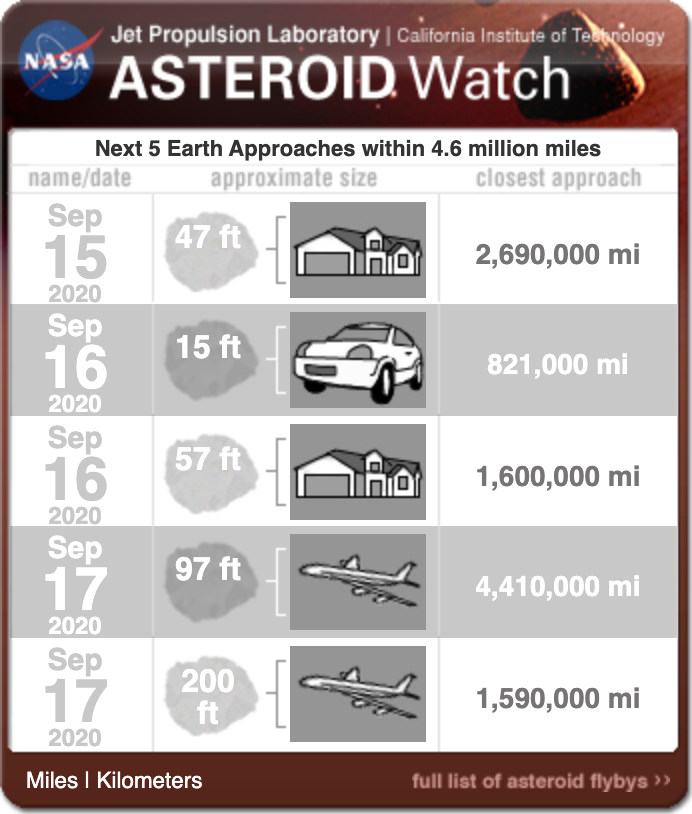Three HUGE asteroids headed towards Earth, after amateur astronomer spots massive space rock our planetary defenses MISSED

Scientists are getting better at spotting inbound, “potentially hazardous” asteroids, with three more measuring over 15 meters in diameter on the way this week. However, asteroid hunters missed a 1,000m space rock just last month.
The Earth is under near-constant threat from space debris in the form of asteroids and meteorites, and this week is no exception, with two smaller space rocks due to buzz the planet today and tomorrow.
Meanwhile, later in the week, NASA gave the ‘heads up’ about three asteroids, each measuring over 15 meters.

On September 16, asteroid 2020 RW3, which measures roughly 18m in diameter (or twice as long as a London bus) will shoot past the Earth at a distance of 2.5 million km.
The week’s asteroidal assault will conclude on Thursday with two much larger space rocks: the 30-meter 2020RN1 (twice the height of the Hollywood sign) and the 62-meter 2014 QJ33 (30 Shaquille O'Neals stacked on top of each other), which will pass at a safe distance of seven million and 2.5 million km respectively.
Lest anyone get too comfortable though, in yet another reminder that humanity must remain ever-vigilant for spaceborne threats, an amateur astronomer in Brazil discovered a large asteroid that somehow slipped past Earth’s main planetary defenses just last month.
Also on rt.com NASA warns of 4 inbound asteroids as ESA shares VIDEO showing just how hard they are to spotAsteroid 2020 QU6, measuring 1,000 meters wide, large enough to inflict significant damage here on Earth if it hit, was spotted by amateur astronomer Leonardo Amaral based at the Campo dos Amarais observatory in Brazil, on August 27.
Mercifully it passed us at a distance of 40 million kilometers, over 100 times the distance between Earth and the moon, on September 10.
Amaral managed to spot the asteroid thanks to his somewhat unique vantage point as he is based in the southern hemisphere, whereas many of our asteroid-hunter telescopes are based in the northern hemisphere.
"This discovery reminds us that even though we've found most large NEOs [Near-Earth Objects] we haven't found all of them," said Casey Dreier, chief advocate and senior space policy adviser for The Planetary Society.
Also on rt.com The Moon is mysteriously rusting despite lack of air & liquid waterThink your friends would be interested? Share this story!















